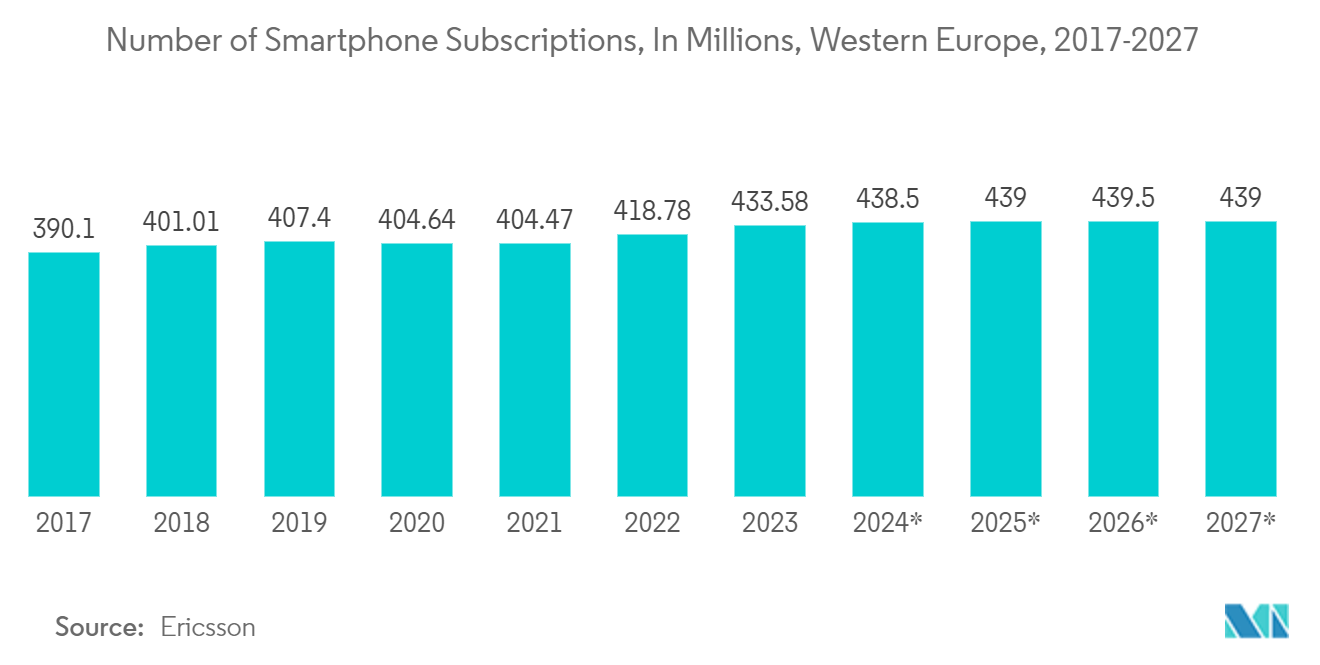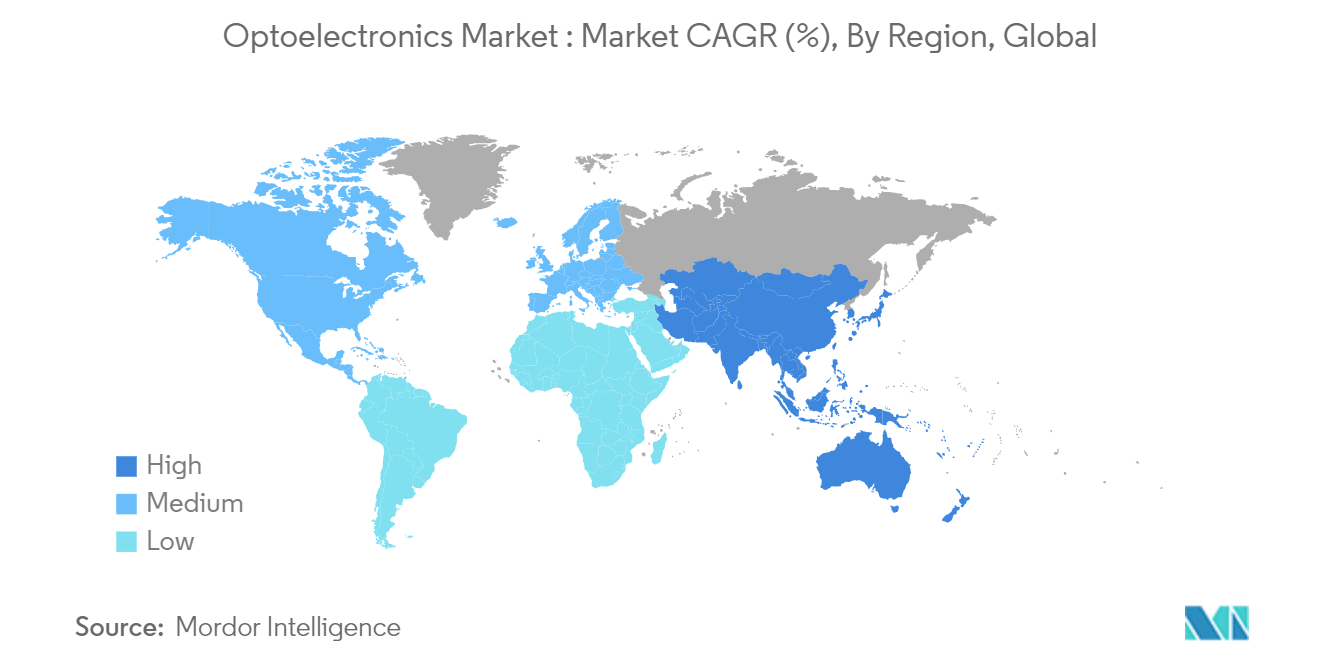Market Trends of Optoelectronics Industry
Consumer Electronics to Witness Significant Growth
- Optoelectronics has various applications in the consumer electronics market. LEDs have revolutionized lighting systems and are used in computer components, watches, switches, household appliances, etc. Smartwatches use optoelectronic sensors, such as photodiodes, to monitor the user's heart rate. CMOS image sensors are often used in smartphones, tablets, and digital single-lens reflex (DSLR) cameras. The growing 5G network and introduction of new products with advanced technologies and features fuels the adoption of smartphones, tablets, and DSLR cameras. Also, the expanding market for mixed reality headsets is aiding the market studied.
- With the rising proliferation of 5G smartphones, many players are introducing image sensors targeted for 5G smartphones, which is contributing positively to the market. For instance, in 2022, Google launched the Pixel 6a, Pixel 7, and Pixel 7 Pro to support the 5G network in India. The Google Pixel 6a supports 19 5G bands, whereas Pixel 7 and 7 Pro support 22 5G bands.
- According to GSMA, Latin America enters the 5G era with 15 million connections expected by 2022. By 2025, 5G is predicted to account for 12% of the region's total connections, with some countries, most notably Brazil, at 20%, exceeding the regional average.
- Furthermore, according to Ericsson, the number of smartphone subscriptions in Western Europe will reach 459 million by 2028. There were approximately 440 million smartphone subscriptions in Western Europe as of 2022.
- Also, the expanding market for mixed reality headsets is aiding the market studied. For instance, in June 2023, Apple introduced Vision Pro, a mixed-reality headset with a 3D camera to help users capture spatial photos and videos in 3D.
- Currently, most AR headsets depend on one or more special imaging sensors, including time of flight (ToF) cameras, which combine a modulated IR light source with a charged coupled device (CCD) image sensor. Thus, the growing demand for these headsets significantly fuels the demand of the studied market.

Asia-Pacific to Hold Major Share
- China is expected to experience a significant growth rate owing to its growing economy and significant share in the global electronics market. The manufacturing industry is rapidly growing in the country and is witnessing the deployment of various technologies in the manufacturing and telecommunications sectors, which is expected to aid the market's growth.
- The Japanese government is taking stringent measures to revive its industries, such as consumer electronics and automotive. Also, the government wishes to reduce the clustering of production facilities in one place to reduce production dependency on geographical constraints. The enhanced focus on the semiconductor and electronics supply chain by various global regions is expected to provide profitable opportunities for the growth of the studied market.
- India has a growing purchasing power, and the growing influence of social media is expected to drive the market for electronic goods. The increase in the number of internet users in India has witnessed a significant increase in recent years. This growth in the internet demand increased demand for faster and more efficient data transmission, driving the need for optoelectronics.
- The South Korean automotive industry is one of the major global markets for vehicle sales and production of passenger cars. It currently contributes more than 10% of all manufacturing output in the country and is experiencing growth owing to significant investments. The industry is dominated by major automakers such as the Hyundai Motor Group, which owns Hyundai, Kia, and Genesis. As a result, South Korea wields significant influence in driving automation technologies in its Automotive industry.
- According to KAMA, in 2022, South Korea exported approximately 2.3 million vehicles, comprising passenger cars and commercial vehicles, representing a 15% increase from the previous year's 2.04 million units. In addition, in 2022, around 3.76 million vehicles were manufactured in South Korea. Kia Motors produced the highest number of vehicles, accounting for 39.4% of automobile sales in South Korea. The increasing automotive demand and production in the Asia Pacific region would offer significant opportunities for developing the market studied.


